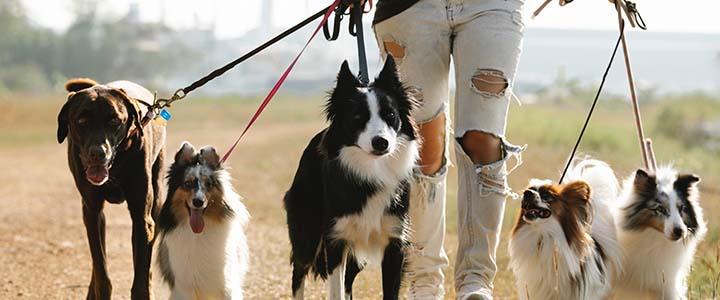
March 2022: For the Sake of Clean Water, As Well As Our Shoes: Scoop the Poop!
Dog owners, you’ve all felt the stares, the shame, the blame at some point – standing off to the side (hopefully downwind) as your furry best friend makes a natural contribution to the environment. It has become ingrained in our polite society that we pick up what our canines put down, that we “scoop the poop,” if you will. If you don’t have that bag out ready to go, you might see some side eyes, and if you dare to walk away without it those eyes would likely be burning holes in the back of your head. The reason for this is a matter of respect and manners when using a shared space: no one wants to accidentally step into a mess left behind!
But dog waste is more than a nightmare for our shoes. There’s another important reason to scoop the poop that isn’t as well known: preventing pollution in our lakes, rivers and coastal waters! Just like human sewage, untreated pet fecal matter is harmful to waterways. If “left to nature,” pet waste and the associated disease-causing organisms, such as giardia and salmonella, can be washed away by stormwater into rivers, beaches and bays via storm drains. Stormwater pollution is actually one of the leading causes of water pollution nationally. Too many bacteria make water unsafe for drinking and swimming and contribute to shellfish bed closures. Pet waste can also add extra nutrients to local waterbodies, which can increase plant growth and algal blooms.
Even if you have your own yard, be wary of leaving the land mines and waiting for a nice collection before cleaning up. Picking it up sooner rather than later will prevent it being carried off by rain.
Here are some easy steps to be part of the solution to pet waste contamination:
- Always carry a plastic bag with you when you walk your dog. Re-using an old newspaper delivery bag or plastic grocery bag works well.
- Using the bag like a glove, you can then pick up the pet waste, turn the bag inside out around the waste, seal the bag, and dispose of it in a trash can.
- Do not leave pet waste bags in the woods or along trails. Even if you are using “biodegradable” bags – if they do break down, the waste is left behind, thus defeating the purpose.
- If you prefer not to use plastic bags, you can find reusable containers and use gloves, newspaper or even a scooper to pick it up. You can flush unbagged pet waste down the toilet.
- Don’t place the bagged or unbagged pet waste in a storm drain or hose the pet waste toward storm drains as they drain directly to a stream, river, lake or other waterbody.
- If you have a large yard, you may bury unbagged pet waste in the yard at least five inches in the ground and away from vegetable gardens, drinking wells and waterways.
- Remove waste from areas where children play or you garden.
- Wash your hands with warm, soapy water after dealing with pet waste.
- Do not compost dog waste; it contains harmful bacteria.
For additional information about what you can do to help reduce pet waste pollution, visit the NHDES Pet Health and the Environment webpage.




